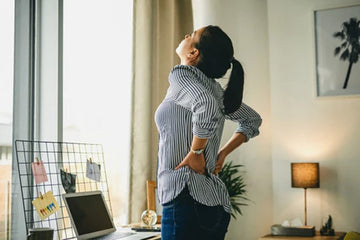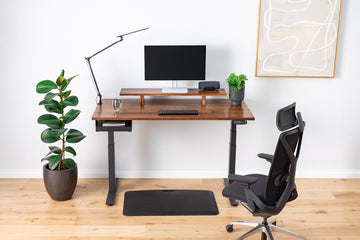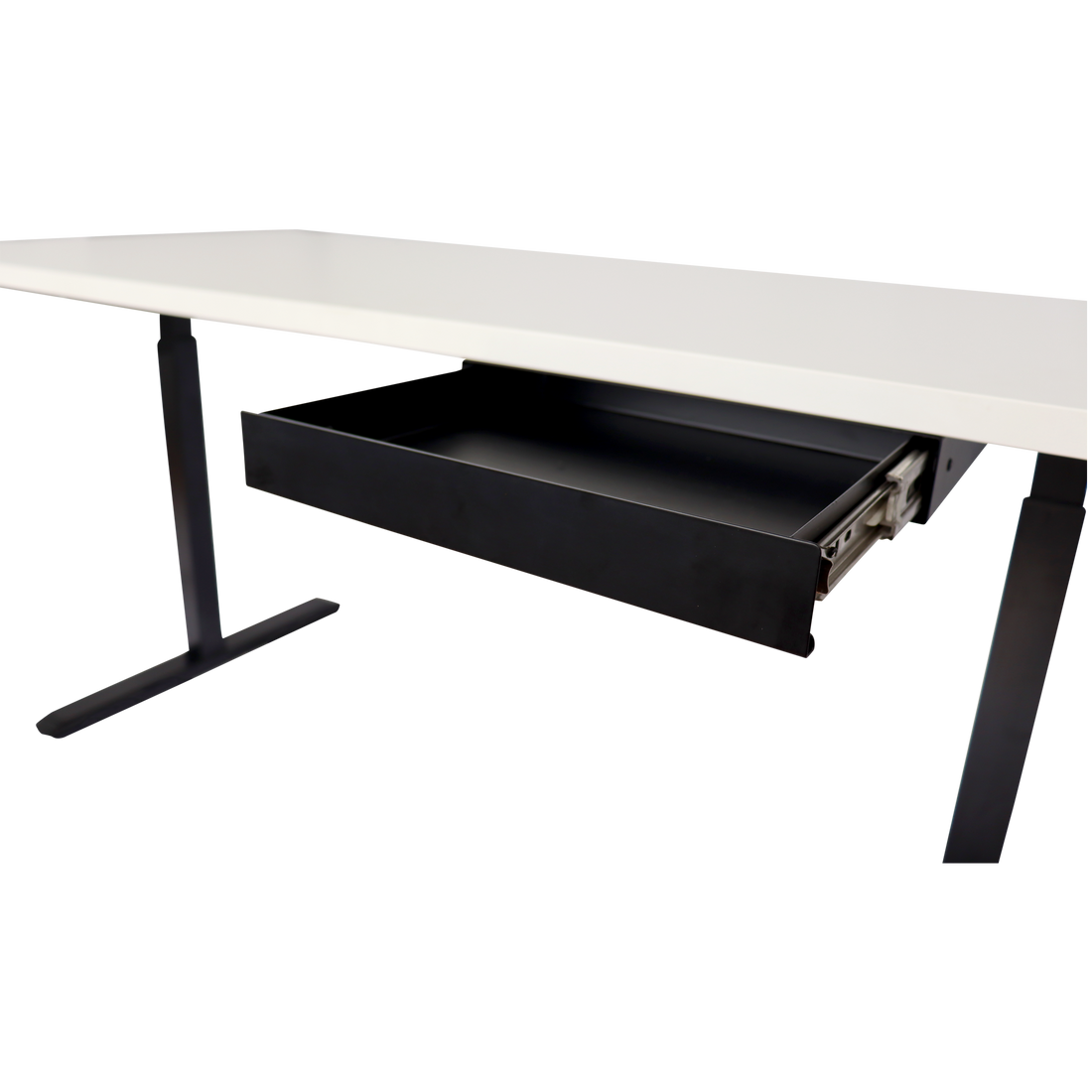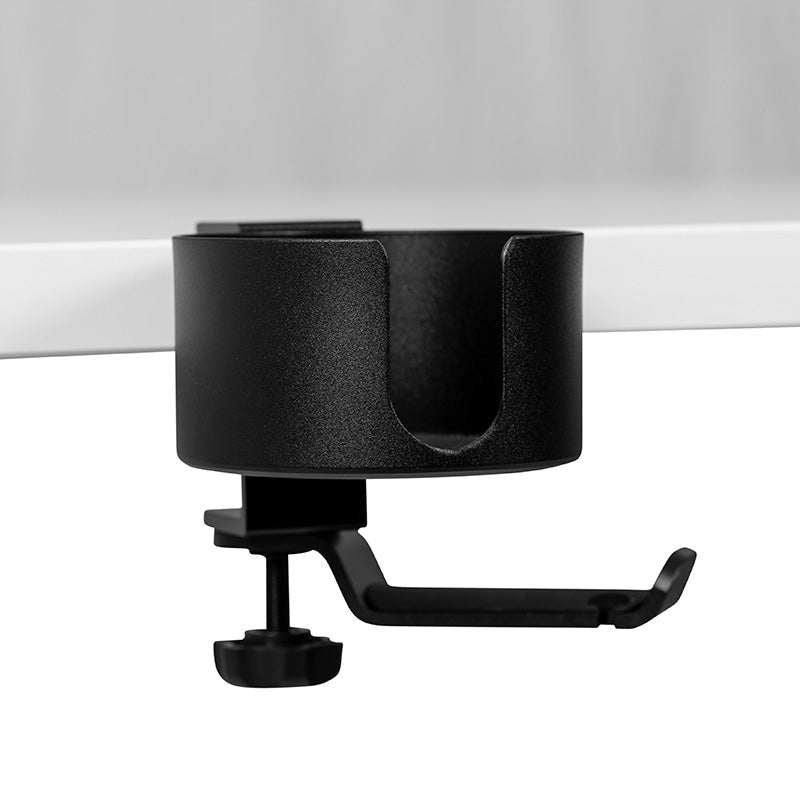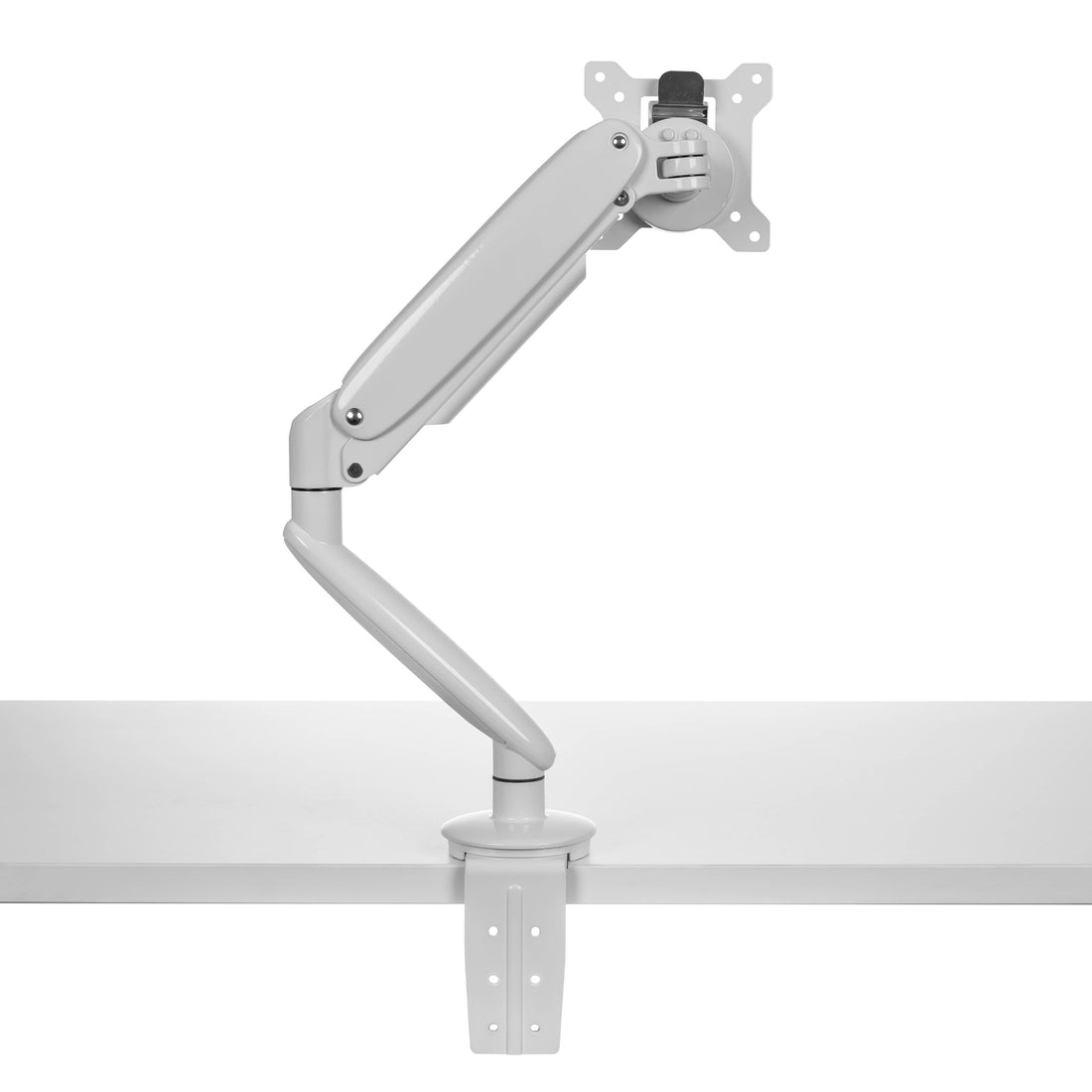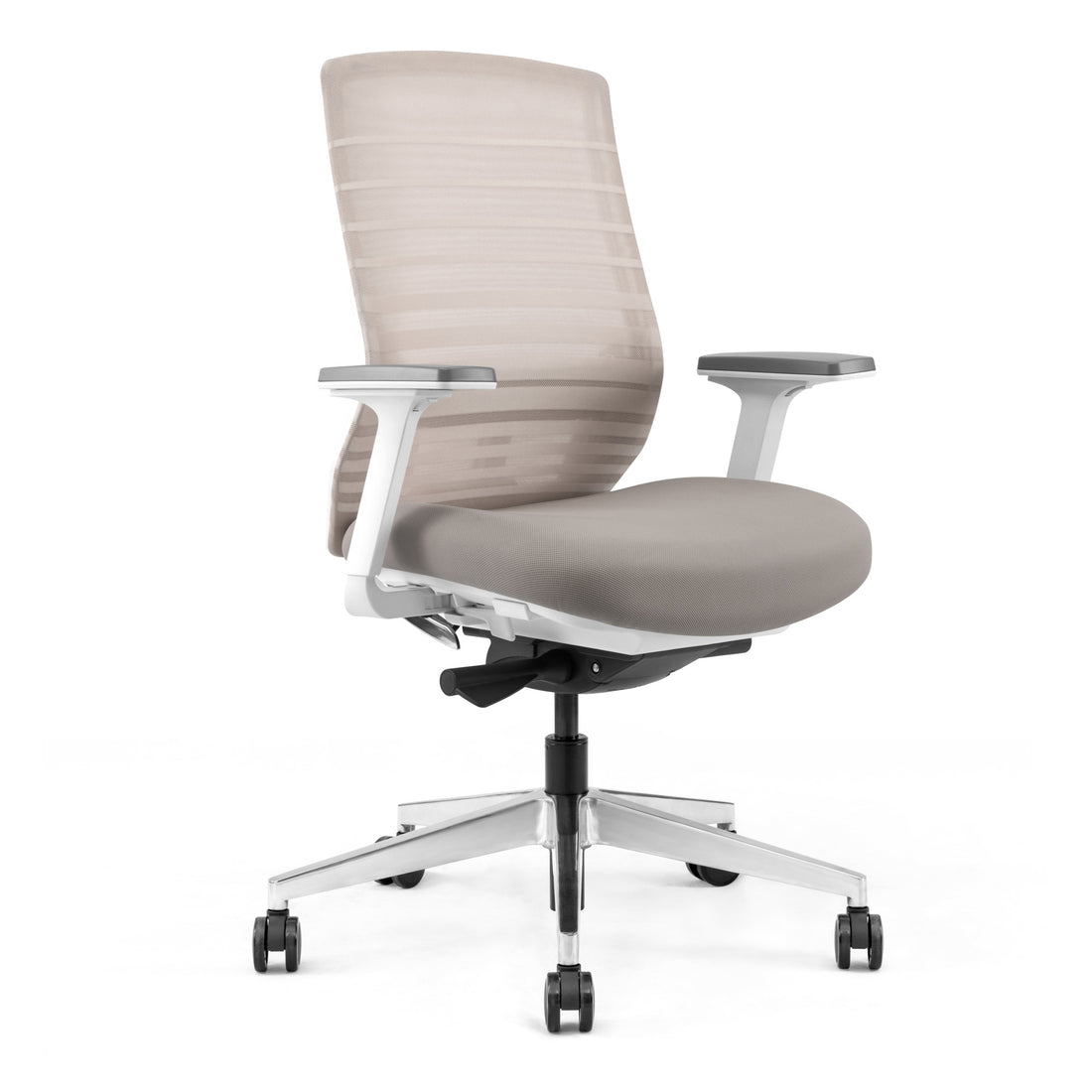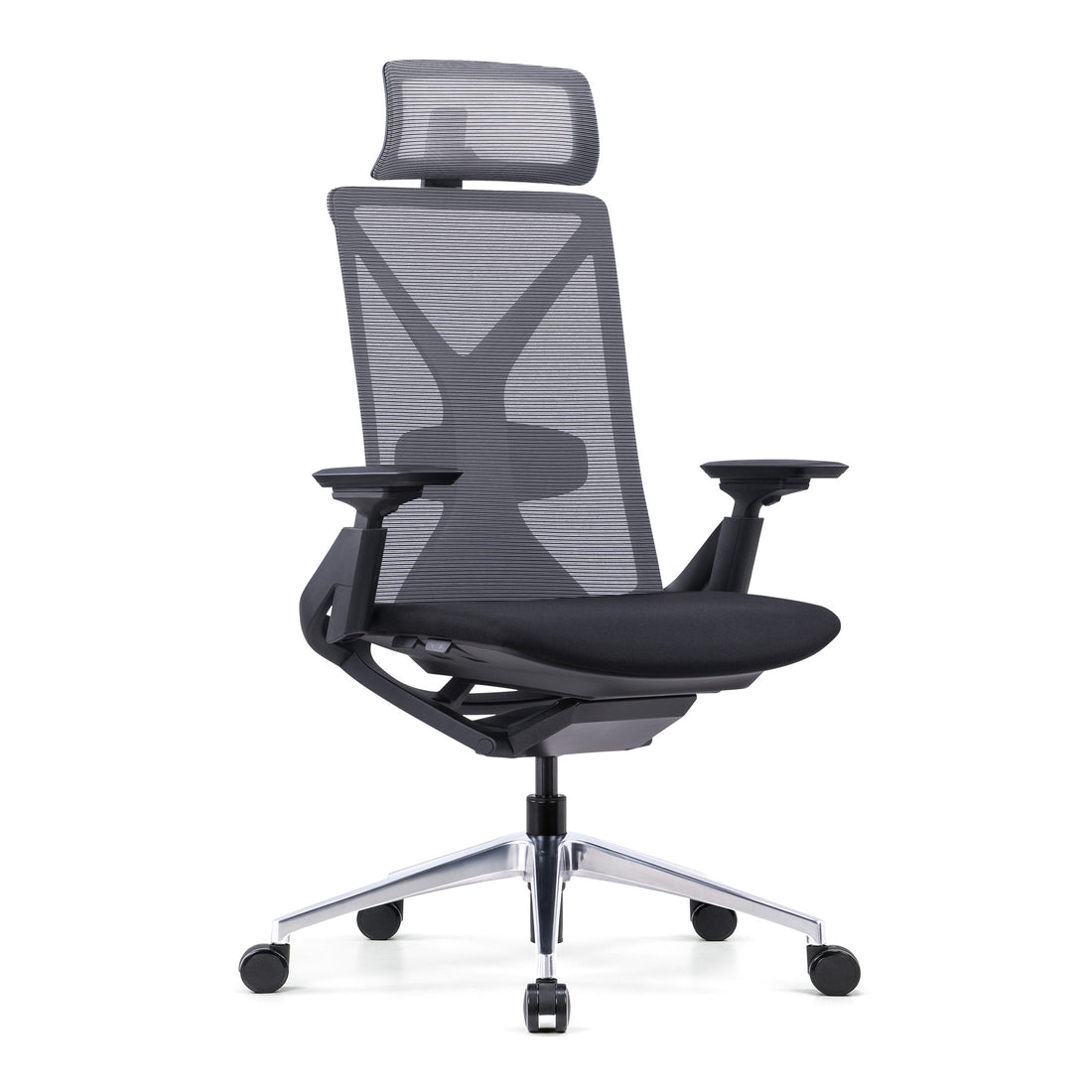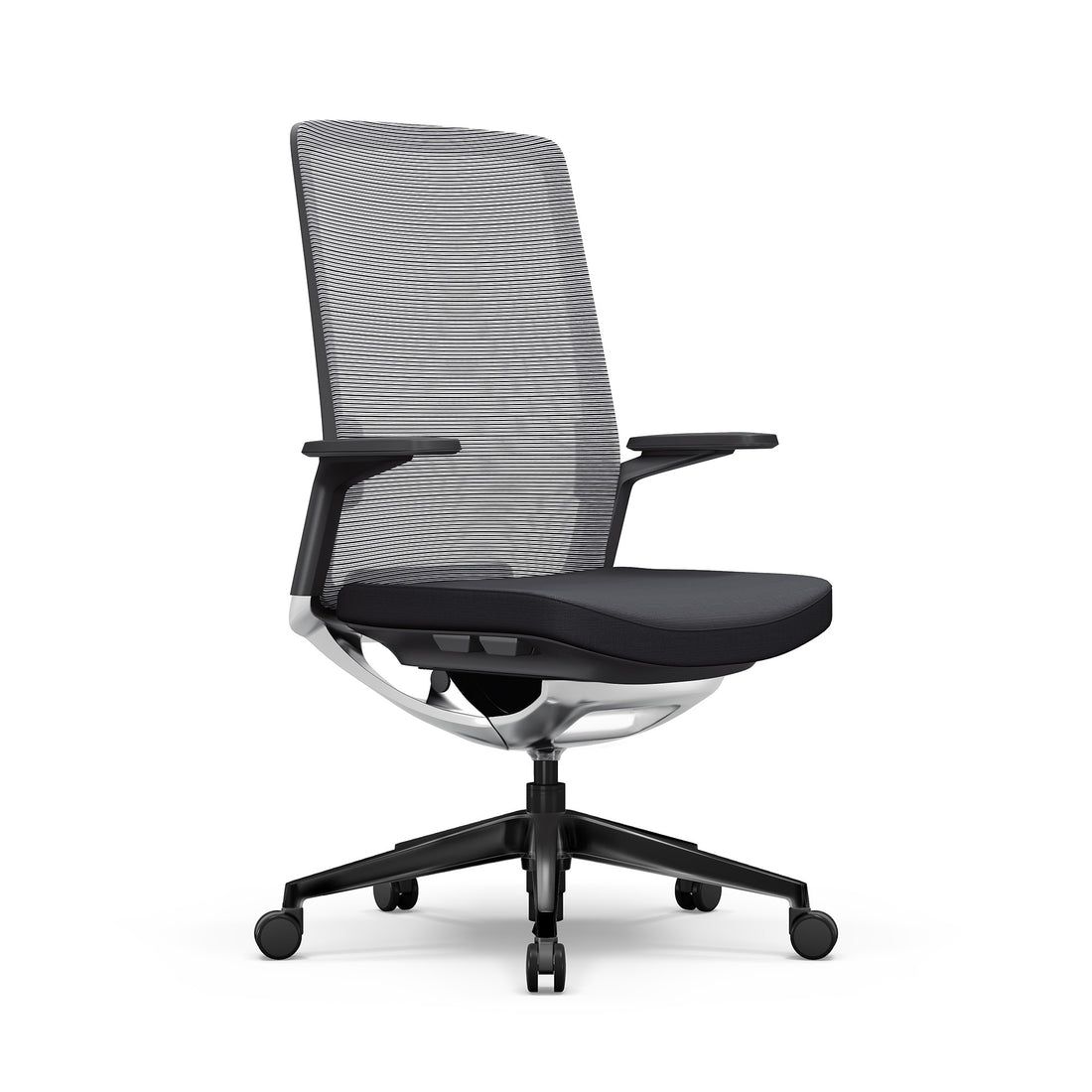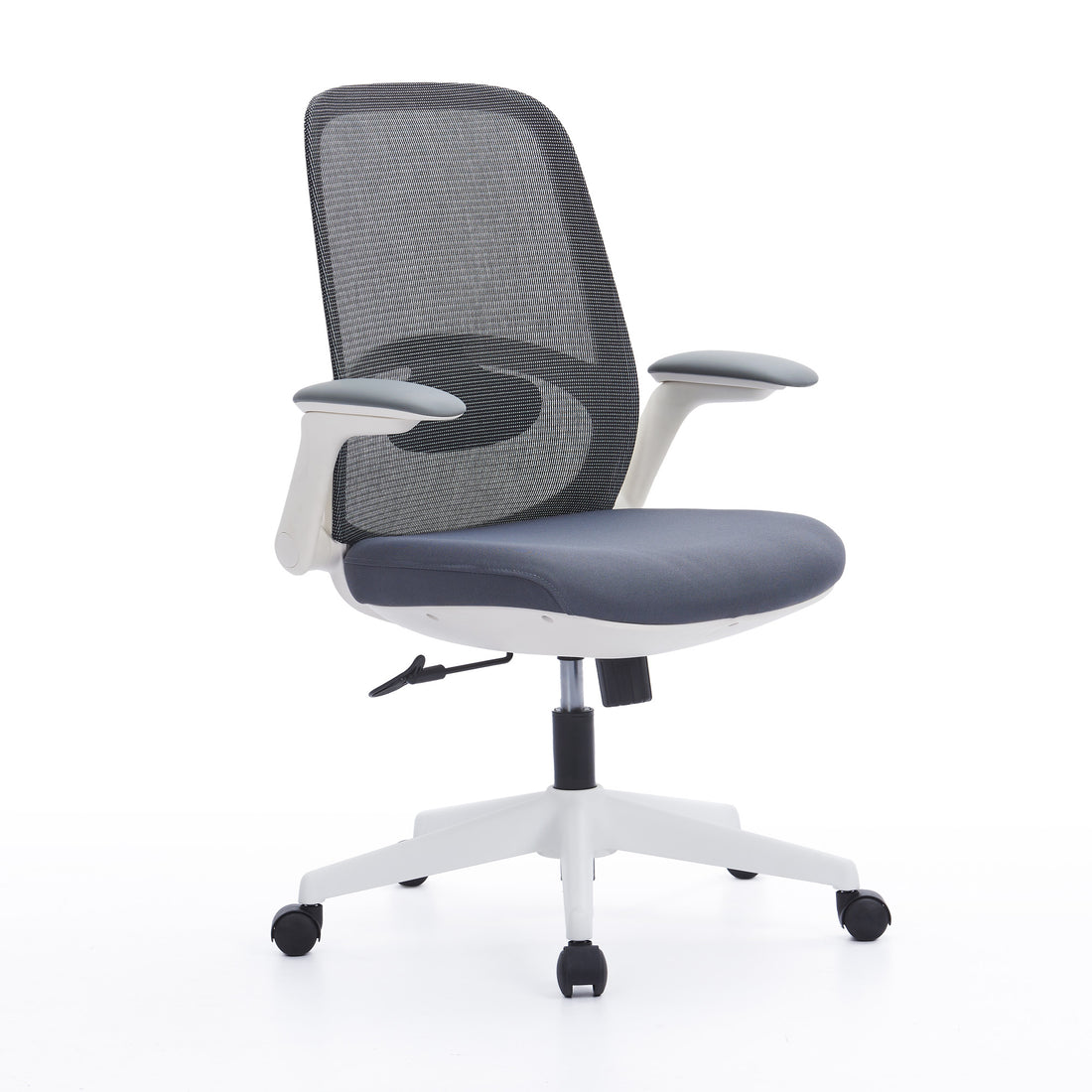Lower back pain is prevalent among individuals who spend long hours sitting at a desk. This article delves into the common causes and types of back pain, emphasizing how poor posture, prolonged sitting, and lack of exercise contribute to discomfort. We also address sciatica, a condition characterized by pain radiating from the lower back down the legs, and discuss how using a standing desk for sciatica can help alleviate this discomfort. Discover how standing desks can be a game-changer, offering benefits such as improved posture, reduced strain, and increased flexibility, particularly in managing standing desk back pain. Practical tips for effective use and a discussion on addressing upper back pain are provided.
By the end, you'll have a comprehensive understanding of choosing and using a standing desk to alleviate back pain and sciatica, supported by scientific evidence and practical advice.
Back Pain - Common Causes and Types
Back pain is a widespread condition affecting people of all ages. It refers to discomfort or pain felt anywhere along the complex structure of the spine, from the neck to the lower back. This pain can range from mild to severe and can significantly impact daily life and overall well-being.
Back pain can originate from various factors, many of which are related to our modern lifestyles. Understanding these common factors can help prevent and manage back pain effectively.
Common Causes of Back Pain
Back pain can arise from numerous factors, often related to our daily routines and physical activities. Understanding these common causes is the first step toward prevention and management. Here are some prevalent reasons:
- Poor Posture: Slouching or hunching over a desk can strain the back muscles, leading to significant discomfort over time. Poor posture disrupts the spine's natural alignment, causing the muscles and ligaments to work harder to maintain balance. This added strain can result in muscle fatigue and tension, particularly in the lower back.
- Prolonged Sitting: Sitting for extended periods can compress the spine and cause discomfort. The pressure on the spinal discs increases, leading to potential issues like herniated discs and nerve compression. This static position can also weaken the core muscles, which are essential for supporting the lower back.
- Lack of Exercise: Inactivity can weaken the muscles that support the spine. A sedentary lifestyle can lead to muscle atrophy, reducing the spine's ability to maintain proper alignment and function. Regular exercise is crucial to keep the back muscles strong and flexible, which helps prevent pain and injuries.
Types of Back Pain
Understanding the different types of back pain is crucial for effective diagnosis and treatment. These distinctions can help pinpoint the underlying causes and appropriate interventions.
Lower Back vs. Upper Back
Lower back pain is often caused by sedentary work, with many people experiencing lower back pain sitting at desk, while upper back pain may be related to poor ergonomics. Lower back pain is typically associated with issues in the lumbar region, including muscle strains and spinal disc problems. In contrast, upper back pain often stems from tension and poor posture, affecting the thoracic spine and surrounding muscles.
Acute vs. Chronic
Acute pain is short-term and often results from an injury, while chronic pain lasts for more than three months. Acute pain usually occurs suddenly and can be severe, but it typically resolves with proper treatment. Chronic pain, however, persists over time and may require long-term management strategies to alleviate symptoms and improve quality of life.
Localized vs. Radiating
Localized pain stays in one area, whereas radiating pain can spread to other body parts, such as sciatica, which travels down the legs. Localized pain is often easier to diagnose and treat while radiating pain indicates a more complex issue involving nerve impingement or inflammation.

How Standing Desks Can Impact Lower Back Pain
Do standing desks help with back pain? Standing desks have become popular for reducing lower back pain from sitting at desk. Understanding their benefits and proper use can help maximize their effectiveness in alleviating discomfort and promoting spinal health.
Benefits of Using a Standing Desk
Standing desks can offer several advantages for those experiencing lower back pain from sitting at a desk. By allowing individuals to alternate between sitting and standing, these desks can help alleviate discomfort and improve overall spinal health.
Benefits for Posture and Spinal Alignment
Using a standing desk can promote better posture, reducing the risk of developing spinal issues. When set up correctly, these desks encourage a neutral spine position, alleviating pressure on the lower back. Maintaining a neutral spine helps distribute weight evenly across the body, minimizing the strain on any one area. Proper posture also supports the spine's natural curvature, reducing the likelihood of developing chronic pain conditions.
A study published in the International Journal of Industrial Ergonomics explored the relationship between near-infrared spectroscopy (NIRS) measures and subjective low back discomfort during sedentary tasks. The findings suggest that standing desks can help reduce low back discomfort by promoting better posture and reducing static loading on the spine and also allowing switching between sitting and standing.
Reduction in Pressure and Strain
Alternating between sitting and standing reduces the strain on the lower back muscles. This can help prevent the compression of spinal discs, which often leads to discomfort. By reducing the time spent sitting, standing desks can lower the risk of developing conditions such as herniated discs and degenerative disc disease. Additionally, standing promotes better circulation, which can help reduce inflammation and muscle tension in the lower back.
Increased Movement and Flexibility
Standing desks facilitate more movement throughout the day, which benefits spinal health. Increased movement helps keep the spine flexible and reduces the risk of stiffness and pain. Standing allows for more natural shifts in posture, preventing the muscles and joints from becoming rigid. This dynamic movement can also enhance overall energy levels and productivity, making staying focused and engaged during work tasks easier.
Practical Tips for Effective Use
To maximize the benefits of a standing desk:
- Alternate Positions: Switch between sitting and standing every 30 minutes. This frequent change in posture helps prevent muscle fatigue and reduces the strain on any one part of the body.
- Use an Anti-Fatigue Mat: Anti-Fatigue mat for standing desk can reduce the strain on your legs and lower back. Anti-fatigue mats provide cushioning that can alleviate pressure on the feet and legs, making standing more comfortable for extended periods.
- Incorporate Desk Risers: These can be used to adjust the height of your workstation, ensuring your monitor is at eye level, and your keyboard and mouse are comfortably positioned. Desk risers help maintain proper ergonomics and reduce the risk of straining the neck, shoulders, and upper back.
- Maintain Proper Ergonomics: Ensure your monitor is at eye level and your keyboard and mouse are comfortable. Proper ergonomic setup is essential to avoid straining the neck, shoulders, and upper back. Adjusting the standing desk height and using ergonomic accessories help maintain a comfortable and healthy working position.
Standing Desks and Upper Back Pain
While this article primarily focuses on lower back pain, it's worth noting that standing desks can also alleviate upper back pain from sitting at a desk. Proper desk setup and ergonomics prevent upper back and shoulder discomfort. By maintaining a neutral spine position and avoiding slouching, individuals can help prevent tension and standing desk back pain especially in the upper back. Additionally, incorporating regular breaks and stretching exercises can help keep the upper back muscles flexible and strong.

Can Standing Desks Help with Sciatica?
Sciatica, characterized by pain radiating from the lower back down the legs, can be particularly challenging to manage. A standing desk for sciatica can help by reducing the pressure on the sciatic nerve. Alternating between sitting and standing encourages better posture and reduces the likelihood of nerve compression. Individuals with sciatica can experience less pain and improved mobility by maintaining a more dynamic and ergonomic working position. It's also beneficial to incorporate specific stretches and exercises that target the sciatic nerve to alleviate discomfort further.
A study available on the National Center for Biotechnology Information (NCBI) website highlights the importance of proper desk setup and ergonomic practices in reducing discomfort and promoting spinal health. This research provides comprehensive insights into how standing desks can alleviate lower back pain.
Choosing and Using a Standing Desk to Help with Back Pain
Standing desks are becoming increasingly popular because they can alleviate back pain. However, selecting the right desk and using it properly, including knowing how to stand at a standing desk, is crucial for maximizing its benefits and ensuring long-term comfort.
Selecting the Right Standing Desk
When selecting a standing desk, consider the following factors:
- Adjustability: The desk should be easily adjustable to accommodate different heights, helping to prevent issues like standing desk back pain. An adjustable desk allows users to find the most comfortable and ergonomic position, whether they are sitting or standing.
- Stability: Ensure the desk is stable and can support your equipment. A stable desk is essential to prevent accidents and ensure a secure working environment.
- Workspace: Choose a desk with ample space for your monitor, keyboard, and other essentials. Enough workspace allows for a clutter-free and organized setup, enhancing productivity and reducing stress.
Proper Use of Standing Desks
Proper standing desk use involves maintaining good posture, using ergonomic accessories, and incorporating regular breaks to move around. It's also important to listen to your body and adjust your working position as needed to prevent discomfort. Regularly alternating between sitting and standing can help keep your muscles engaged and prevent stiffness, effectively addressing issues like standing desk back pain.
Expert Insights and Research on Standing Desks and Back Pain
Several studies highlight the benefits of standing desks for back pain. For example, Callaghan, Gregory, and Durkin (2010) study published in the International Journal of Industrial Ergonomics found that standing desks can reduce low back discomfort during sedentary tasks. Their research utilized near-infrared spectroscopy (NIRS) to measure the physiological responses related to back pain, providing a scientific basis for the ergonomic benefits of standing desks.
Additionally, Hedge and Earnest's research (2004) demonstrated that electronic height-adjustable workstations decreased musculoskeletal discomfort and increased productivity. Their study involved computer workers who used these adjustable desks, showing significant improvements in comfort and efficiency.
Research available on the National Center for Biotechnology Information (NCBI) website provides further insights. This comprehensive study highlights the importance of proper desk setup and ergonomic practices in reducing discomfort and promoting spinal health. It also underscores how alternating between sitting and standing can alleviate lower back pain.
Moreover, a research article on Elsevier examines the effects of standing desks on back pain, emphasizing the benefits of alternating between sitting and standing. This study highlights the reduction in pressure on the spinal discs and the overall improvement in posture, reinforcing the value of using standing desks in daily routines.
Conclusion
Back pain is a complex issue with various contributing factors. By understanding the common causes and types of back pain, individuals can take proactive steps to prevent and manage discomfort. Incorporating regular exercise, maintaining good posture, and limiting prolonged sitting are essential for spinal health.
Standing desks offer a promising solution for reducing lower back pain from sitting at a desk. However, it is crucial to select the right desk and use it correctly to maximize its benefits. While standing desks can be beneficial, they may not address all types of back pain.
Consulting with a healthcare professional is recommended for persistent or severe discomfort. Individuals can significantly improve their back health and overall well-being by combining preventive measures, ergonomic adjustments, and potentially seeking professional guidance.
References
- Jiameng Ma, Dongmei Ma, Zhi Li, Hyunshik Kim, Effects of a Workplace Sit–Stand Desk Intervention on Health and Productivity, Int J Environ Res Public Health. 2021 Nov; 18(21): 11604
- Leon Straker, Rebecca A. Abbott, Marina Heiden, Svend Erik Mathiassen, Allan Toomingas Sit–stand desks in call centres: Associations of use and ergonomics awareness with sedentary behavior, Applied Ergonomics Volume 44, Issue 4, July 2013, Pages 517-522
- J.P. Callaghan, D.E. Gregory, J.L. Durkin, Do NIRS measures relate to subjective low back discomfort during sedentary tasks? Int. J. Ind. Ergon. 40 (2010) 165–170.
- A. Hedge, J.R. Earnest, Effects of an Electronic Height-Adjustable Worksurface on Computer Worker Musculoskeletal Discomfort and Productivity, Proc. Hum. Factors Ergon. Soc. Annu. Meet. 48 (2004) 1091–1095.
FAQ
Do Standing Desks Help With Back Pain?
Yes, standing desks can help alleviate back pain by promoting better posture and reducing pressure on the spine. Alternating between sitting and standing throughout the day can prevent the discomfort associated with prolonged sitting.
Does a Standing Desk Hurt Your Back?
If used incorrectly, a standing desk can cause discomfort. To ensure proper posture, adjust the desk to the right height and take regular breaks to avoid straining your back and legs.
How Do I Stop My Back From Hurting When I Sit at My Desk?
To prevent your back from hurting, maintain good posture by sitting up straight, using an ergonomic chair, keeping your feet flat on the floor, and taking frequent breaks to stretch and move around. Also, adjust your chair and desk to ensure your screen is at eye level.
Is Standing Good for Lower Back Pain?
Yes, standing can reduce pressure on the lower back and improve posture, alleviating lower back pain. For those who experience lower back pain sitting at a desk, alternating between sitting and standing can help to keep muscles active and reduce the risk of stiffness..
Are Standing Desks Good for Your Back?
Yes, standing desks are beneficial for your back. They encourage movement and reduce prolonged sitting. They help maintain proper spinal alignment and reduce the strain on back muscles.
Is Standing Better Than Sitting for Lower Back Pain?
Alternating between standing and sitting is best for managing lower back pain. Prolonged standing or sitting can cause discomfort, so changing positions regularly helps prevent muscle fatigue and stiffness.
Is a Standing Desk Better for Sciatica?
A standing desk for sciatica can help alleviate symptoms by reducing pressure on the lower back and promoting better posture. It allows you to change positions frequently, which can be essential for managing pain and discomfort effectively.
How to Sit at a Desk With Sciatica?
Sit with your feet flat on the floor and use a chair with good lumbar support. Keep your knees at a right angle and take regular breaks to stretch and move. Adjust your chair and desk height to keep your spine neutral.

